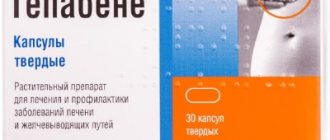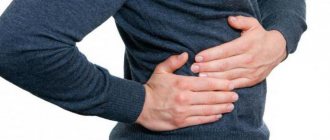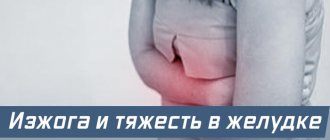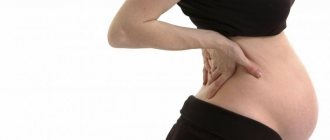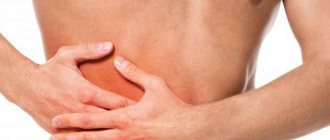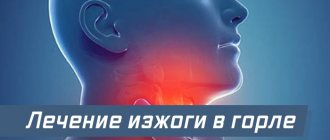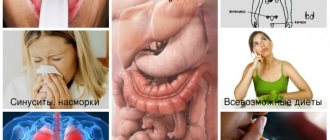Burning sensation in the right side: which organs are involved in the inflammatory reaction?
In the human body, everything is structured in such a way that when painful sensations appear in one of the points of the body, they do not necessarily speak of the development of a disease of the organ located in the area of the ailment. A burning sensation in the right side is provoked by various pathologies. For example, even an abdominal infarction can radiate not to the left side, which usually happens with cardiac disorders, but to the opposite side.
Which organs cause burning sensations on the right:
- Liver;
- Intestines, appendix;
- Gallbladder;
- Lung;
- Bud;
- Pancreas.
As you can see, almost all systems of the abdominal cavity can be involved in the inflammatory reaction, extending to the right side. In addition, even intercostal neuralgia or accumulation of salts in the spine at the lumbar level causes symptoms in the back or front of the body.
Accordingly, if a patient experiences a burning sensation in the area where the liver or gallbladder is located, it is necessary to undergo diagnostics to find out the exact cause of the symptoms. An abdominal ultrasound alone will not be enough. You should undergo a CT or MRI of the spine and lungs, and palpate the appendix and gastrointestinal tract.
Associated symptoms
If a burning sensation in the liver is caused by a violation of the structural and functional state of the gallbladder and the liver itself, the patient also notices a number of associated symptoms, including:
- fast fatiguability;
- recurrent headaches;
- poor appetite, and as a result – weight loss;
- insomnia;
- causeless skin itching;
- yellowing of the skin and mucous membranes;
- discoloration of stool;
- darkening of urine.
It is worth noting that liver dysfunction can occur covertly for a long time, without obvious manifestations. Typically, pain and burning appear only in the later stages of the disease.
Burning sensation to the right of the spine: causes of symptom development
You can understand which organ became inflamed and began to provoke a painful condition by looking at the accompanying ailments. Pain in the hypochondrium is in most cases associated with the following diseases:
Impaired excretion of bile with dyskinesia;
Suppression of motility, that is, hypotension of the gallbladder, contributes to stagnation of the secretory substance produced in the liver. The patient experiences aching, burning symptoms under the right rib. They usually radiate only to the front, but with severe inflammation they can spread to the back of the body.
Intensification of malaise occurs with physical or nervous strain. Also, the burning becomes unbearable after eating fatty or spicy foods or taking certain medications. The danger of violations is that over time, stagnation of bile crystallizes and leads to the formation of stones.
Cholelithiasis;
If sand or stones form in the ducts, then the disease is accompanied not only by burning sensations, but also by colic. They occur when bile secretion is retained and gradually spread under the right shoulder blade. This is especially true for food intake and stress.
Cholecystitis;
Inflammation also causes heat on the right side. Symptoms become more pronounced after consuming alcoholic beverages, fried foods, and seasonings. Cholecystitis is often accompanied by increased stomach acidity, so patients experience heartburn and nausea. The inflammatory process has a negative impact on the general condition, the patient is worried about weakness, lethargy, and decreased ability to work.
Hepatitis, liver cirrhosis;
Not always, but in severe stages of the disease, people may experience a burning sensation in the right side. As a rule, inflammation and destruction of liver tissue very rarely reveal their course in the early stages. But with serious functional impairment, pain occurs in the hypochondrium, yellowness of the skin, general weakness, and itching.
Chronic pancreatitis;
The pain can spread to the entire abdominal cavity from above the navel and to the back. The same manifestations accompany pancreatic tumors.
Gastritis, duodenal ulcer, appendicitis;
With inflammation of the mucous membrane of the gastrointestinal tract, sensations reminiscent of fever are disturbing. They are localized both to the right and to the left of the navel. Symptoms worsen after eating food. If the temperature rises and the pain becomes paroxysmal, you should consult a surgeon so as not to miss an attack of appendicitis.
Kidney diseases;
Often, due to the presence of sand or stones, a strong burning pain occurs in the hypochondrium. The fever is persistent, body temperature rises if acute pyelonephritis is noted. Usually there are changes in the color of urine and its smell. Urolithiasis radiates to the lumbar area. When bending or moving, the symptoms intensify and spasms appear.
There are other reasons that can be accompanied by a burning sensation:
- Neuralgia;
- Osteochondrosis;
- Diaphragm hernia;
- Neoplasms;
- Angina pectoris, heart attack;
- Shingles;
- Pleurisy, lung tumor;
- Giardiasis.
Also during pregnancy, when the placenta begins to compress the organs, similar manifestations are disturbing. In such cases, discomfort spreads to either side of the abdomen and back. But most often it radiates to the right under the ribs.
Possible reasons
In general, such symptoms may indicate problems not only with the gallbladder, but also with other organs:
- liver;
- diaphragm;
- head of pancreas;
- loops of the small intestine;
- duodenum;
- right kidney
This suggests that pain and burning sensations on the right side arise as a result of trauma and damage to the listed organs by other diseases. The course of these diseases can be different, which is why they are perceived differently.
Most common reasons
There are plenty of causative factors that lead to discomfort in the liver. But most often, doctors identify the following pathologies among the culprits of burning, acute and aching pain:
- cholecystitis;
- dyskinesia;
- genetic abnormalities;
- stones;
- tumor formations.
Based on the nature and nature of the ailments being diagnosed, pain can differ markedly from each other. This can only be understood if you carefully analyze your own condition.
Chronic disease as a source of burning sensation
This is the most common gallbladder disease, affecting mainly the fairer sex. In case of stones, the condition of calculous cholecystitis is diagnosed.
There are a large number of factors that precede the formation of this pathology. Most often, the causes include the influence of helminths (parasites), fungal elements, and Giardia. As a result, a person may feel that his gallbladder hurts and burns a little.
Cholecystitis can be of toxic and allergic origin. There is a possibility of microbes entering this organ from the intestines, blood fluid, and lymph.
The triggers for the development of the disease are certain foods: fatty meat and fish, anything spicy, alcohol. The situation can be aggravated by the formation of an inflammatory process occurring in the background.
For example, pneumonia, pancreatitis, cholelithiasis, gastritis, tonsillitis. Unpleasant sensations arise constantly, localized in the liver and gall bladder.
Other factors
In addition to the above ailments, this condition can be caused by other factors:
- neurosis and excessive emotional stress;
- diseases of endocrine function;
- obesity;
- allergic reactions;
- inflammatory processes in the pelvis;
- state of dysbacteriosis;
- abuse of certain drugs;
- poor nutrition;
- the presence of some forms of hepatitis;
- diseases of the biliary tract and canals.
Thus, there may be several reasons for the burning sensation in the hypochondrium.
When is pain and burning localized in the back?
Pain that extends to the back of the body can be the result of various pathologies. Less commonly, it is associated with impaired functionality of the spine and pinched nerve fibers. Most often it is caused by diseases in the abdominal cavity.
If the burning sensation bothers you in the back area under the ribs, then the patient may develop the following pathological inflammations:
- Acute pyelonephritis (continuous pain that becomes more intense when the dorsal ribs are struck from below);
- Chronic pyelonephritis (painful sensations are weak, aching, more disturbing in wet weather);
- Urolithiasis (the intensity of the heat depends on the size of the crystal and its location in the ducts, intensifies when turning the body, jumping, after drinking heavily);
- Renal colic (the movement of a stone through the urinary canal causes a strong burning sensation and does not allow movement);
- Acute pancreatitis (girdles, the attack is characterized by nausea/vomiting, worsens when lying down);
- Osteochondrosis (pain is dull or sharp, burning, hinders movement in the lower back, does not allow sitting in one place for a long time);
- Retroperitoneal hematoma (due to a back injury, a vessel may crack - the heavier the bleeding, the more pronounced the fever).
A burning sensation occurs for various reasons. But according to statistics, gallbladder disorders come first. 2nd place rightfully belongs to cardiac pathologies. And the third is impaired lung function.
Acute pain under the ribs: possible consequences
If it burns and cuts severely for half an hour, you need to call an ambulance. This means that acute inflammation has arisen in the body, which can provoke a state of shock, complications and even death.
Acute pain under the ribs are signs of the following diseases:
- An attack of acute pancreatitis;
- Gallstone rupture;
- Appendicitis;
- Breakthrough of the duodenal wall;
- Blockage of the bile duct with a stone;
- Kidney rupture due to injury.
All conditions require surgical intervention.
Treatment
A burning sensation in the hypochondrium can only be relieved with complex therapy. If the symptoms that arise cause severe discomfort, you should seek help from a general practitioner, an infectious diseases specialist, or a gastroenterologist. The specialist will make a diagnosis and prescribe an effective treatment regimen.
There are a number of important measures that help improve the condition and can cure the disease:
- daily adherence to a dietary diet. It is important to exclude all products that negatively affect the functionality of the bile organ. This applies to fatty meat or fish, fried and spicy foods, spices, and smoked meats. The diet includes lean food, which is cooked mainly by steaming with a small addition of vegetable oil. Fermented milk products are allowed, provided they are low in fat, as well as vegetables and fruits. Equally important is the frequency of meals - at regular intervals at least five times during the day;

Dietary ration
- etiotropic treatment is aimed at eliminating the causes of pain. Doctors prescribe medications, herbal remedies or surgery;
- the pathogenetic treatment regimen for the affected organ is aimed at reducing general intoxication of the body, increasing digestive function, as well as normalizing the functioning of the biliary system;
- Symptomatic-type techniques are necessary to combat discomfort, relieve spasms and reduce pain.
What is prohibited for pain in the front or back of the back?
If the pain is dull and aching, then you can take 2 tablets of No-Shpa, but the next day you must undergo diagnostics and find out the cause of the inflammation.
Under no circumstances should you warm up the affected area yourself, as exposure to heat can aggravate the disease and complicate its course. Often, hot procedures cause suppuration because they activate the proliferation of pathogenic microflora.
You should not take painkillers (No-Spa is not one of them, because it has an antispasmodic effect). Such medications complicate diagnosis and change blood tests. For example, analgin can distort the results characteristic of acute appendicitis.
It is better to avoid eating foods and sugary drinks for the whole day. For diagnostic manipulations, abstinence from food is a very good assistant. In addition, temporary fasting will alleviate the condition.
It is forbidden to take choleretic drugs. If the patient has stones, they can get stuck in the ducts and cause the bladder to rupture. It is also worth limiting physical activities.
Burning pain in the front under the ribs on the right is a dangerous sign of the development of various types of peritonitis. Any rupture or perforation allows bile, food and microflora to enter the abdominal cavity and cause a purulent process. If the problem is not resolved in time, the person develops sepsis, leading to death.
With renal colic, patients often experience painful shock. It causes collapse, disrupting humoral processes. Failure to go to the hospital in a timely manner can result in death.
Can similar symptoms occur in healthy people?
Yes, this happens. For example, with low mobility, physical activity increases blood circulation in the vena cava. And as a result of the release of adrenaline, heat occurs in the right hypochondrium. But stopping the load stops the burning sensation.
Also, when the body bends, the tissues are compressed by the ribs, which causes an unpleasant symptom. It is temporary and does not continue to bother you after changing the position of the body.
In women during PMS, estrogen is released and a fever appears on the right side. Sometimes the pain is severe, causing nausea and a bitter taste. This is due to spasm of the bile ducts.
